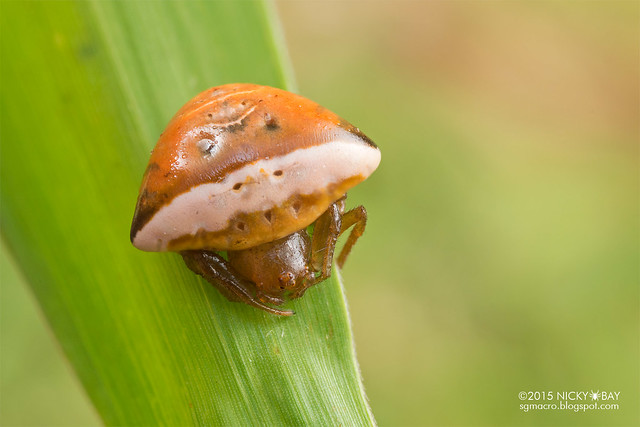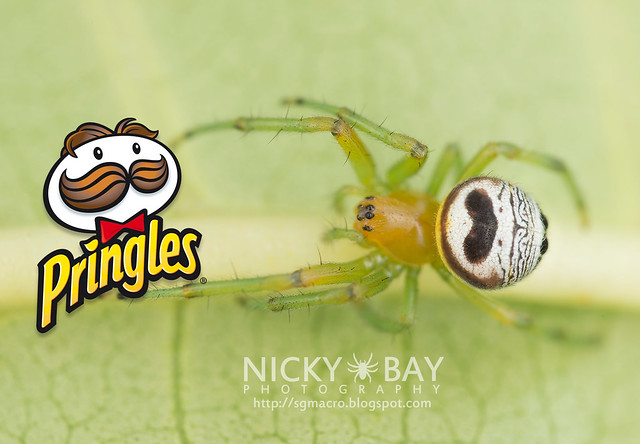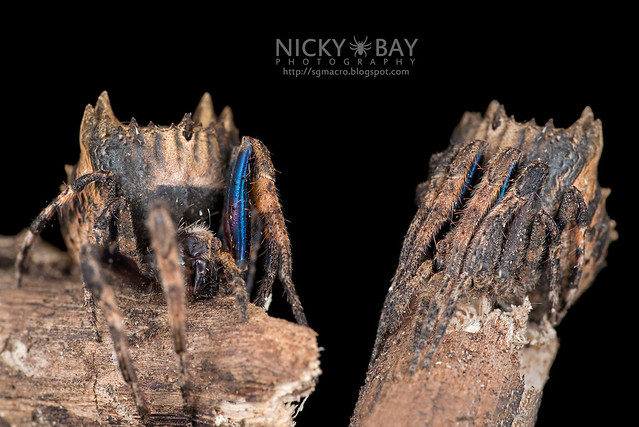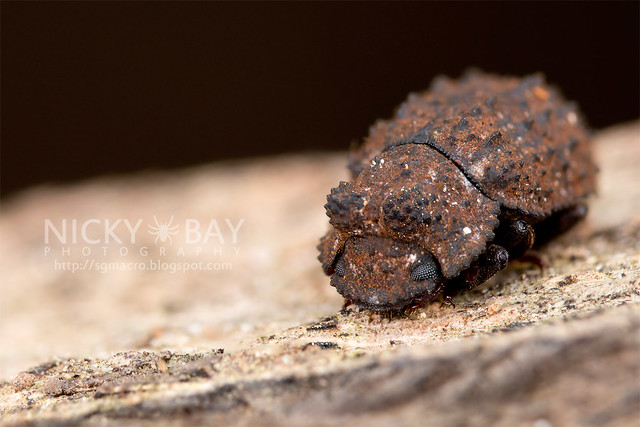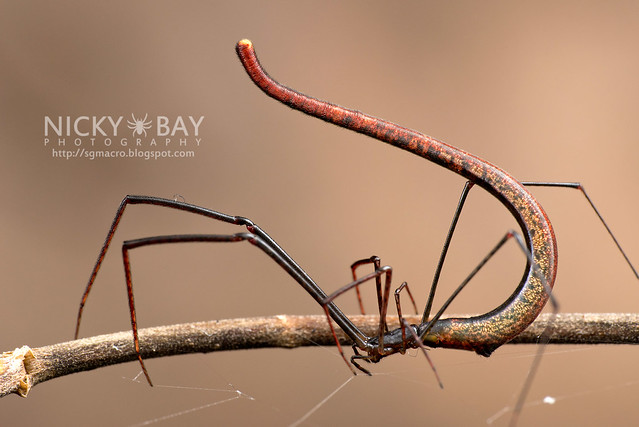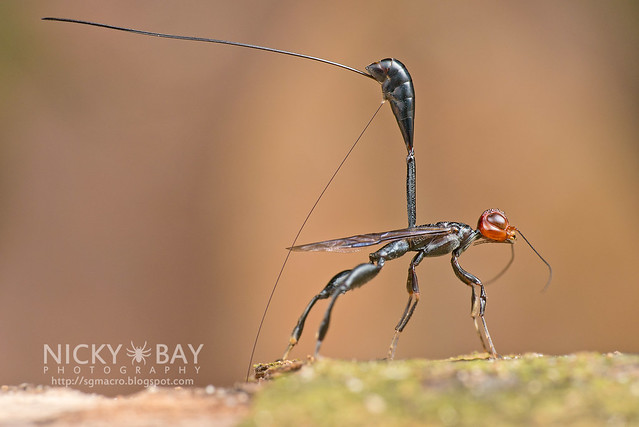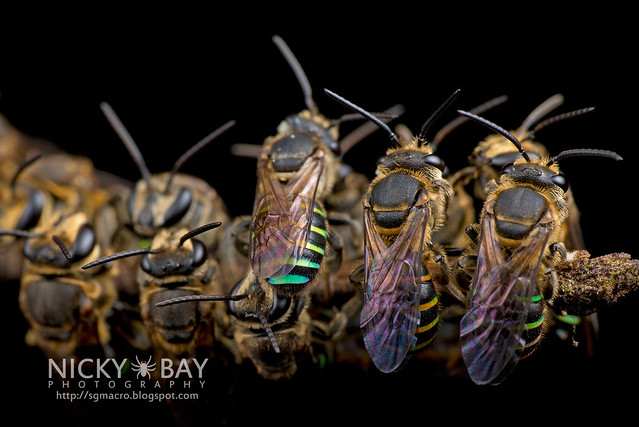[ Day 1 | Day 2 | Day 3 | Day 4 | Day 5 ]
I had been wanting to visit Sabah for the longest time, but clashed schedules and many other issues held it back until this year. I was more than impressed by the rich biodiversity of micro fauna in Borneo, so much that I had to organize a Macro Photography Bootcamp here almost immediately after coming back!
Many thanks to Dennis and Jeff for arranging most of the logistics, and to Nick and Amber for the fun bug hunting time we had!
Note: I have been using Borneo, Sabah and Tawau in my recent posts interchangeably. For those confused, Tawau is a town in Sabah. Sabah is a state in Malaysia. Borneo is the 3rd largest island in the world, which includes Brunei, parts of Malaysia and parts of Indonesia.
The complete album for this day's findings can be viewed on Flickr.
Remember to check out the other posts for this trip from the links below! If you are interested in the smaller wildlife of Borneo with the guide of an experienced macro photographer, check out the upcoming Borneo Bootcamp. It is not to be missed!
[ Day 1 | Day 2 | Day 3 | Day 4 | Day 5 ]
I had been wanting to visit Sabah for the longest time, but clashed schedules and many other issues held it back until this year. I was more than impressed by the rich biodiversity of micro fauna in Borneo, so much that I had to organize a Macro Photography Bootcamp here almost immediately after coming back!
Many thanks to Dennis and Jeff for arranging most of the logistics, and to Nick and Amber for the fun bug hunting time we had!
Note: I have been using Borneo, Sabah and Tawau in my recent posts interchangeably. For those confused, Tawau is a town in Sabah. Sabah is a state in Malaysia. Borneo is the 3rd largest island in the world, which includes Brunei, parts of Malaysia and parts of Indonesia.
Day 1 - Arrival
Day 1 was more like just a night shoot, as we traveled via Kuala Lumpur and took the later flight to Tawau. Had time to buy some groceries in case we got hungry at night, had a nice dinner, got worried when it rained, checked in, and wasted no time to get our butts into the trails! This blog post simply documents what we have found, and is not a photographic showcase - it will include blurry shots too.- Orb web spider (Neoscona sp.)
This Neoscona was perched on the plants in front of our cabins, good warm up subject! Could have taken close ups but I've recently chosen to take shots of spiders in their natural positions wherever possible in order to document their habitat. - Big jaw spider (Tetragnathidae)
Several tetragnathids visible in the foliage, with their inclined orb webs. The rain caused most of the subjects to look wet and more reflective. - Copper-cheeked frog (Hylarana labialis)
The pond beside our cabin had A LOT of these frogs, also known as the white-lipped frog. My ID for frogs is very weak, would appreciate any correction if mistakes are spotted! - Copper-cheeked frog (Hylarana labialis)
Dorsal view for reference - Copper-cheeked frog (Hylarana labialis) Buy this Photo
Under ultraviolet light, their eyes would like up like possessed amphibians! - Copper-cheeked frog (Hylarana labialis) Buy this Photo
View from the top, the fluorescence is apparently on the surface of the eye and not just a retinal reflection as thought. - Huntsman spider (Pandercetes sp.)
Found lots of huntsman spiders loitering on the tree trunks. - Huntsman spider (Pandercetes sp.)
Close up shot of the body. - Leafhopper nymph (Cicadellidae)
Numerous leafhoppers too, this nymph had a little see-through look. - Jumping spider (Salticidae) preying on Huntsman spider (Sparassidae)
We spotted an awesome catch by a jumping spider, devouring a huntsman spider! - Jumping spider (Salticidae) preying on Huntsman spider (Sparassidae)
Settled down on a leaf, but continued its meal. Had the prey helplessly looking into the camera... - Spiny orb web spider (Gasteracantha sp.)
Probably a juvenile, but I've not seen any other adult Gasteracantha in the area, just a few Macracantha. - Leafhopper nymph (Cicadellidae)
Some of the leafhoppers got a little bit more colour on them. - Leafhopper nymph (Cicadellidae)
The characteristic tibial spines. - Leafhopper (Cicadellidae)
Did I mention that they were becoming more and more colourful? This was tiny, about 2 to 3mm long. - Leafhopper (Cicadellidae)
Probably the most beautiful leafhopper on this trip! - Harvestman (Opiliones) with Moth-like planthopper (Ricaniidae)
Was trying to shoot this moth-like planthopper and a harvestman decided to walk by. - Harvestman (Opiliones)
Close up of the intruder! - Stick insect (Phasmatodea)
There were several large spiky stick insects, but due to the rain, their bodies were wet and very reflective. - Stick insect (Phasmatodea)
Dorsal view shows how broad the abdomen can get - fat stick! - Stick insect (Phasmatodea)
Close up on the eye would be much cuter! - Stick insect (Phasmatodea)
More stick insects! - Stick insect (Phasmatodea)
The small ones tend to hide under the leaves, so it is not always easy to find them. - Darkling beetle? (Tenebrionidae?)
Not sure of the ID to this beetle yet, but thought I'd take a quick shot anyway. - Springtail (Salina sp.)
These tiny springtails can run really fast, but this was stationary. - Frog (Anura)
A juvenile frog, not sure of ID. - Frog (Anura)
Patterns not really distinct yet. - Orb web spider (Gea sp.)
The Gea in Singapore were typically brown and white while this had a vibrant yellow pattern! - Comb-footed spider (Theridiidae)
Not particularly good at identifying this group of spiders, and they really can keep running. - Harlequin flying frog (Rhacophorus pardalis)
One of the many beautiful tree frogs lazing by the pathways. - Harlequin flying frog (Rhacophorus pardalis)
Really.. really.. sleepy... - Harlequin flying frog (Rhacophorus pardalis)
Close up on another one! - Harlequin flying frog (Rhacophorus pardalis)
A little bit more awake as it lifted its head to look at me. - Harlequin flying frog (Rhacophorus pardalis)
I must've looked really boring... - File-eared tree frog (Polypedates otilophus)
This was deeper into the vegetation, blocked by lots of twigs but I managed to squeeze through to get some angles of it. - File-eared tree frog (Polypedates otilophus)
Notice the tiger-striped legs! - File-eared tree frog (Polypedates otilophus)
And the "file-ear"! - File-eared tree frog (Polypedates otilophus)
Just chilling. Tree frogs have some of the cutest poses on branches. - Katydid (Tettigoniidae)
Interesting looking katydid, at least 2 to 3 inches long. - Katydid (Tettigoniidae)
It was colourful! - Fishing spider (Hygropoda sp.)
We were near to the pond, these flexible-legged fishing spiders didn't come as a surprise. - Fishing spider (Hygropoda sp.)
View of the eye arrangement. - Harlequin flying frog (Rhacophorus pardalis)
Seen so many of these tree frogs that I had to put a flash behind to see if I could see their skeletal structure. Well.. barely. Just barely. - Dwarf toad (Pelophryne sp.)
There were lots of toads on the grass as well. Not too sure of ID. - Dwarf toad (Pelophryne sp.)
Just relaxing on some grass. - Frog (Anura)
Another juvenile frog of unknown ID. - Frog (Anura)
It had a nice spotty head! - Orb web spider (Neoscona sp.)
Probably Neoscona melloteei but not confirmed. - Broad-headed bug (Alydidae)
These bugs are actually ant-mimics. Easily mistaken for an ant when viewed from a distance. - Harlequin flying frog (Rhacophorus pardalis)
Since there were so many of them, I tried a closer view of their eyes. - Harlequin flying frog (Rhacophorus pardalis)
And the face! - Grasshopper (Caelifera)
The striped eyes of this grasshopper was really intriguing! - Daddy-long-legs spider (Pholcidae)
Tiny little pholcid carrying her sac of eggs. - Daddy-long-legs spider (Pholcidae)
Lateral view! - Stick insect (Phasmatodea)
More giant stick insects. I wanted to take wide angle shots but those would have been better looking in the day and when they were not so wet. - Stick insect (Phasmatodea)
Another one hanging out. - Feather-legged spider (Uloboridae)
This fancy looking uloborid had a messy web under a leaf. - Katydid (Tettigoniidae)
Closer look at one of the katydids. Looked plain green until we took the close up shots. - Katydid (Tettigoniidae)
Lateral view. - Ant-like sac spider (Utivarachna sp.)
The Utivarachna that we have in Singapore were pinkish red, while this dons a hue of green and yellow. I waited VERY long before it decided to stay still for some record shots. - Katydid (Tettigoniidae)
Stunning katydid that flattens itself onto a leaf when threatened. - Katydid (Tettigoniidae)
What do we see here? A mite sucking on the katydid! - Trilobite beetle larva (Platerodrilus sp.)
Amber found several trilobite beetle larvae on some fallen logs. - Tarantula (Theraphosidae)
We chased this tarantula around but it eventually disappeared into the leaf litter. - Katydid (Tettigoniidae) Buy this Photo
Found another katydid that flattens itself, and placed my flash behind to "see through" it. - Katydid (Tettigoniidae)
How it looked like normally. - Katydid (Tettigoniidae)
Close up on the head! - Ant-like sac spider (Utivarachna sp.)
Eye arrangement of the Utivarachna. - Ant-like sac spider (Utivarachna sp.)
Lateral view, showing the invagination behind the ocular region. - Ant-like sac spider (Utivarachna sp.)
Since this one stood still for a while, I took pictures at every angle! - Weevil (Curculionidae)
Scruffy looking weevil, but it had a deep red colour! - Weevil (Curculionidae)
Dorsal view. - Black armored cockroach (Catara rugosicollis)
The ones in Singapore gave off an odd scent when they felt threatened. Luckily this one didn't give off any scent. - Trilobite beetle larva (Platerodrilus sp.)
More trilobite beetles! The tiny heads are so cute~ - Trilobite beetle larva (Platerodrilus sp.)
This was perched at the edge of a sawed log. - Wall crab spider (Selenopidae) or huntsman spider (Sparassidae)
Wasn't sure if this tiny spider was a selenopid or sparassid. - Wall crab spider (Selenopidae) or huntsman spider (Sparassidae)
Check out the eye arrangement! There are also 2 red "horns" on each corner of the cephalothorax which could just be the lateral eyes. - Ornate earless agama (Aphaniotis ornata)
As we were getting ready to rest... we spotted an odd looking lizard. - Ornate earless agama (Aphaniotis ornata)
It had a small but weird appendage at the tip, as if it just told some lies. Obviously not looking happy there. - Frog (Anura)
Small little cute frog staring at us while we back-tracked to our cabins. - Lynx spider (Hamadruas sp.)
There were several sightings of these metallic looking lynx spiders. - Lynx spider (Hamadruas sp.)
Larger than the Oxyopes that we usually see in Singapore. - Lynx spider (Hamadruas sp.)
It's a boy! - Trilobite beetle larva (Platerodrilus sp.)
Amber saw yet another trilobite beetle larva. This one was much longer and thinner. - Whip scorpion (Thelyphonida)
Also saw a vinegaroon, or whip scorpion. Didn't disturb it, so we didn't smell like vinegar. :) - Ant-like sac spider (Utivarachna sp.)
Another Utivarachna! This had a deeper red tone. - Ant-like sac spider (Utivarachna sp.)
Probably a sub-male? - Butterfly (Lepidoptera)
Large butterfly at rest, didn't get to ID it yet. - Butterfly (Lepidoptera)
Dorsal view.

























































































The complete album for this day's findings can be viewed on Flickr.
Remember to check out the other posts for this trip from the links below! If you are interested in the smaller wildlife of Borneo with the guide of an experienced macro photographer, check out the upcoming Borneo Bootcamp. It is not to be missed!
[ Day 1 | Day 2 | Day 3 | Day 4 | Day 5 ]
































































































































































































































































































































































































































































































































